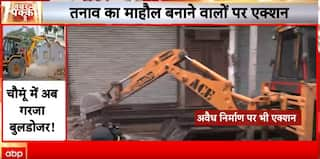NASA Artemis I To Launch BioSentinel, A First-Of-Its-Kind Deep Space Biology Mission. Know All About It
NASA is set to launch a shoebox-sized CubeSat to perform the first long-duration biology experiment in deep space, as part of the Artemis I mission. The CubeSat, called BioSentinel, will carry yeast.

NASA is set to launch a shoebox-sized CubeSat to perform the first long-duration biology experiment in deep space, as part of the Artemis I mission. The goal of the Artemis missions on the Moon is to prepare humans to travel on increasingly farther and longer-duration missions to destinations like Mars. The CubeSat, called BioSentinel, will carry microorganisms, in the form of yeast, to obtain more knowledge about the health risks in space posed by space radiation.
According to NASA, space radiation is like a 'demolition derby' on the nanoscale. Demolition derby is a non-racing motorsport in which five or more drivers compete by deliberately ramming their vehicles into one another. Space radiation is the phenomenon in which high-energy galactic cosmic rays and bursts of solar particles permeate deep space, and which can wreak havoc on electronics and living cells alike.
What Will BioSentinel Do?
The main function of BioSentinel will be to monitor the vital signs of yeast to see how they fare when exposed to deep space radiation. The reason why yeast cells were chosen is that they have biological mechanisms similar to human cells, including DNA damage and repair. Therefore, researchers can better understand the risk of space radiation to humans and other biological organisms by studying yeast in space. This will help NASA plan crewed exploration missions to the Moon and beyond.
According to the US space agency, BioSentinel will study yeast cell growth and metabolic activity after exposure to a high-radiation environment beyond low-Earth orbit. A total of 10 secondary payloads will be launched to deep space on Artemis I. BioSentinel is one of those payloads. All of them are six-unit CubeSats, and are mounted within the Orion stage adapter aboard the Space Launch System (SLS) rocket. Once the CubeSats are ejected into space, they will carry out science and technology investigations.
BioSentinel is the only CubeSat among the 10 secondary payloads on Artemis I to carry a life science experiment. In a statement released by NASA, Matthew Napoli, BioSentinel project manager at NASA's Ames Research Center in California's Silicon Valley, said BioSentinel is the "first of its kind", and that it will carry living organisms farther into space than ever before.

The Apollo 17 mission, conducted in 1972, holds the record for the longest duration human deep spaceflight. The Moon mission lasted 12.5 days. This is far shorter than future Mars missions that will take years to complete. Apollo 17 had carried NASA's most recent experiments to study terrestrial life in space beyond low-Earth orbit. So far, no space biology experiment has travelled beyond the Earth-Moon system.
ALSO READ: Apollo 11 to Artemis — All Past And Future Manned Moon Missions
How Will BioSentinel Work?
The Space Launch System (SLS) rocket will deploy BioSentinel in space within hours of launch. A few days after launch, BioSentinel will swing past the Moon and fly the rest of its six- to nine-month mission orbiting the Sun. Once BioSentinel is in orbit, ground control will periodically trigger week-long yeast studies. The CubeSat will use a radio developed by NASA's Jet Propulsion Laboratory in Southern California to beam the data to Earth through NASA's Deep Space Network.
What Are Biosentinel’s Instruments?
BioSentinel consists of a novel biosensor which is a miniature biotechnology laboratory designed to measure how living yeast cells respond to long-term exposure to space radiation. A set of microfluidics cards is at the core of the biosensor. Microfluidics cards are custom hardware that allow for the controlled flow of extremely small volumes of liquids. The cards serve as a habitat for yeast and provide a way for scientists to observe them in real time.
The biosensor technology of BioSentinel is based on microfluidics systems developed for prior CubeSat missions. NASA's E. coli Anti-Microbial Satellite, or EcAMSat was the most recent precursor to BioSentinel. EcAMSat was deployed into low-Earth orbit from the International Space Station to study the genetic basis for how effectively antibiotics can combat bacteria in spaceflight.
BioSentinel also consists of a physical radiation detector instrument developed at NASA's Johnson Space Center in Houston. The physical radiation detector instrument characterises and measures radiation, and its results will be compared to the biosensor's biological response. Identical sets of BioSentinel's instruments are present in the space station, and in a lab at Ames. These instruments will be used to check and compare the yeasts' responses.
Related Video
Southern Rising Summit 2024: How Important is Self-Awareness? Insights from Anu Aacharya | ABP LIVE






































